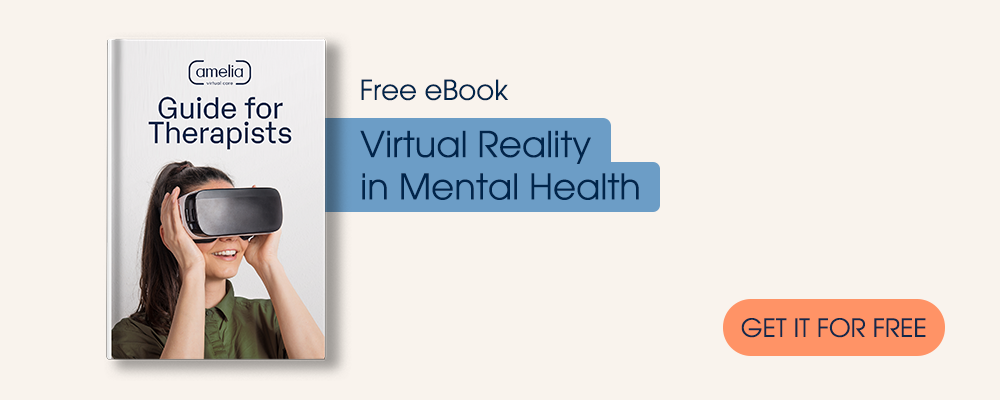Increasing economic and financial instability, social isolation, and health uncertainty have all contributed to a constant feeling of unease during the COVID-19 pandemic. Unfortunately, these factors have also magnified mental health challenges for children and adults in the U.S.
In June 2020, The Centers for Disease Control and Prevention (CDC) found that more than 40% of over 5,000 survey respondents reported at least one adverse behavioral or mental health condition resulting from COVID-19. Later the same year, the International Committee of the Red Cross reported that up to 51% of adults believe that COVID-19 has had a negative impact on their mental health.
Various treatments and medications are available to tackle mental health issues. However, the importance of properly educating the public on how to manage their mental health cannot be overstated. Despite the clear and significant uptick in mental health conditions, many people continue a trend we’ve seen for decades – suffering in silence rather than seeking help to improve their quality of life.
In some cases, people simply don’t know where to turn for help or how to find out what treatment options are available. Others feel embarrassed to share their struggles or fear rejection from family and friends. Yet, with the pandemic continuing to disrupt everyone’s everyday lives, healthcare providers across all industries have an unparalleled opportunity to emphasize the importance of prioritizing mental health.
How to improve mental health
Most importantly, it’s essential to recognize that treatment options for mental health issues vary depending on the patient’s specific condition and individual life circumstances. As a result, there is no “one-size-fits-all” solution, and many patients will need to try several different options before finding the treatment that works best for them.
However, compassion and empathy are some of the most helpful and most overlooked skills healthcare professionals can use with distressed patients. When speaking to patients, be present, and listen without interruption or judgment. Express genuine empathy by fostering a solid patient-provider relationship and instill hope in the patient by empowering them with information about how they can recover in their own way.
Your suggestions may include:
Engaging in regular exercise for both physical and mental health. Exercise is an excellent way to release negative energy and reduce levels of stress hormones, such as cortisol and adrenaline. Even if the patient is hesitant to visit a gym or fitness center during the pandemic, there are still plenty of at-home and outdoor activities they can engage in to support a healthy body and mind.
Encouraging social activities and drawing on friend and family support groups. A popular initial approach to behavioral health concerns is to draw on existing social supports. For example, you may ask the patient, “Do you have someone in your life you can talk to or who can help support you in dealing with your mental health struggles?” Social support can come from many sources, including family, friends, religious groups, and support groups for specific issues, such as a 12-step program.
Practicing mindfulness and breathing exercises. Issues like depression, anxiety, and generalized stress can be helped tremendously by practicing simple breathing exercises. Studies show that regulating your breathing can lower stress hormones and may help lower blood pressure. One popular exercise you can teach patients is the box breathing technique, also called the “4×4 breathing” technique. Instruct patients to breathe in for four counts, hold their breath for four counts, exhale for four counts, then hold for four more counts, and repeat.
How to teach your patients to prioritize mental health
You can start by educating patients on the most common signs of mental illness and helping them determine whether professional help is necessary for themselves or their loved ones. Additionally, highlighting the clear link between mental health and physical health may encourage patients to take a closer look at their mental well-being.
Mental health after COVID-19
The pandemic has brought new challenges and feelings of stress and uncertainty for all of us. So, what happens after entire communities have been forced to drastically change their routines and exposed to abnormally high levels of stress? As we’ve seen, the number of Americans now dealing with mental health challenges has drastically increased, likely fueled by feelings of powerlessness and a loss of control.
One of the most effective strategies healthcare providers can teach their patients to regain a sense of normalcy after COVID-19 is establishing a new yet familiar routine. For instance, if the patient is used to waking up every morning for a commute, suggest that they try sticking to this pattern as much as possible. They can continue waking up at the same time, getting dressed in the morning, and working during the same hours to help establish a “new normal.”
For patients who require more hands-on treatment, the pandemic has had one particularly positive impact. COVID-19 has ushered in unprecedented access to telemedicine for patients struggling with mental health issues, which can be used to help those who prefer to receive treatment from the comfort of their own homes. Talk therapy is especially complementary to telemedicine and is tremendously helpful for patients with anxiety and depression.
Mental health education provides the necessary awareness and resources for those struggling with mental health issues. However, all healthcare providers must work to break the stigma commonly associated with mental health disorders. Virtual reality (VR) has various benefits for all aspects of healthcare, including mental health. If you’re interested in learning more about how Amelia and VR can help your clinical practice, contact us today.












